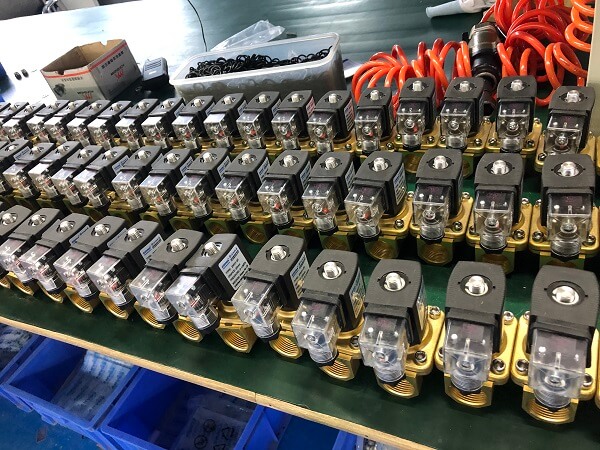The solenoid valve has an airtight cavity with through holes in different positions. Each hole is connected to a different oil pipe. In the middle of the cavity is a piston. On both sides are two electromagnets. The coil of the magnet on which the valve body is connected will be drawn to which side By controlling the movement of the valve body to open or close different drain holes, and the oil hole is always open, the hydraulic oil will enter different drain pipes, and then through the oil pressure to push the piston cylinder, the Piston, in turn, moves the Piston Rod Piston Rod driven mechanism. In this way, by controlling the current of the electromagnet, the movement of the machine can be controlled.
Solenoid valve from the principle is divided into two categories:
Direct-acting solenoid valve
Principle: When energized, the electromagnetic coil generates electromagnetic force to lift the closing member from the valve seat, and the valve opens; when the power is off, the electromagnetic force disappears, the spring presses the closing member against the valve seat, and the valve closes.
Features: It can work normally under vacuum, negative pressure and zero pressure, but the diameter is generally not more than 25mm.The pilot-type solenoid valve adopts the method of opening the large valve by the small valve, the flow rate is large, and the large-diameter is selected as the pilot type.
Pilot-operated solenoid valve
Principle: When energized, the electromagnetic force opens the pilot hole, the pressure in the upper chamber drops rapidly, and a pressure difference between the lower part and the lower part is formed around the closing member. The fluid pressure pushes the closing member upward to move the valve to open; when the power is off, The spring force closes the pilot hole, and the inlet pressure passes through the bypass hole to form a lower low and high pressure difference around the valve member, and the fluid pressure pushes the closing member downward to close the valve.
Features: The direct-acting solenoid valve has a corresponding speed, and the action time is short. When the frequency is high, the direct-acting type is generally used.
Post time: Jul-28-2021





